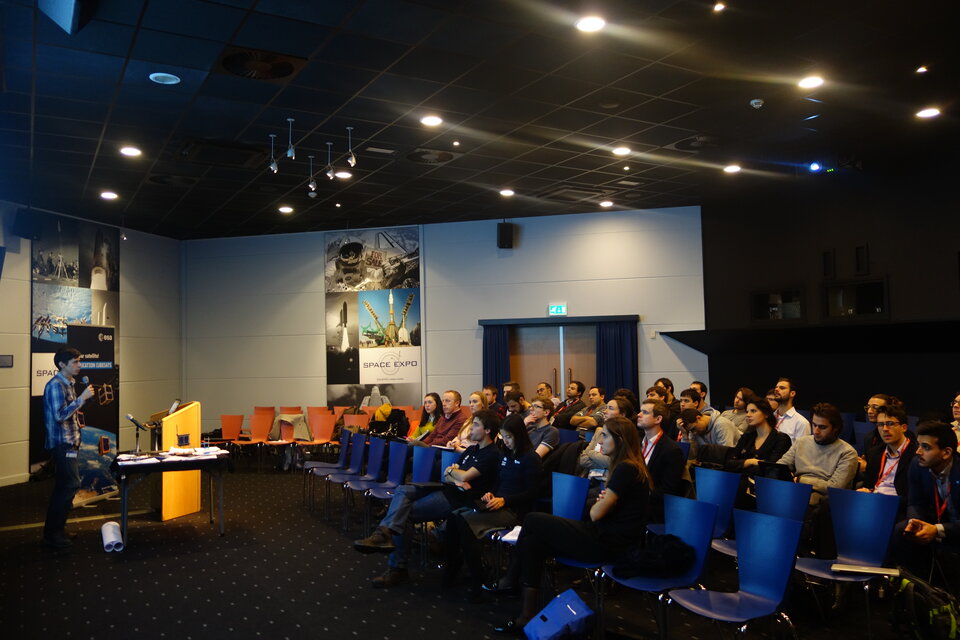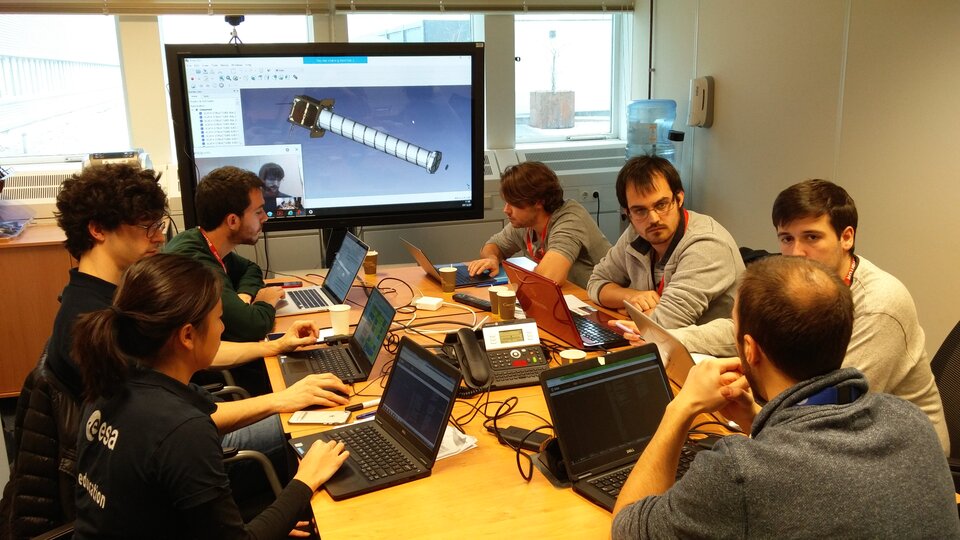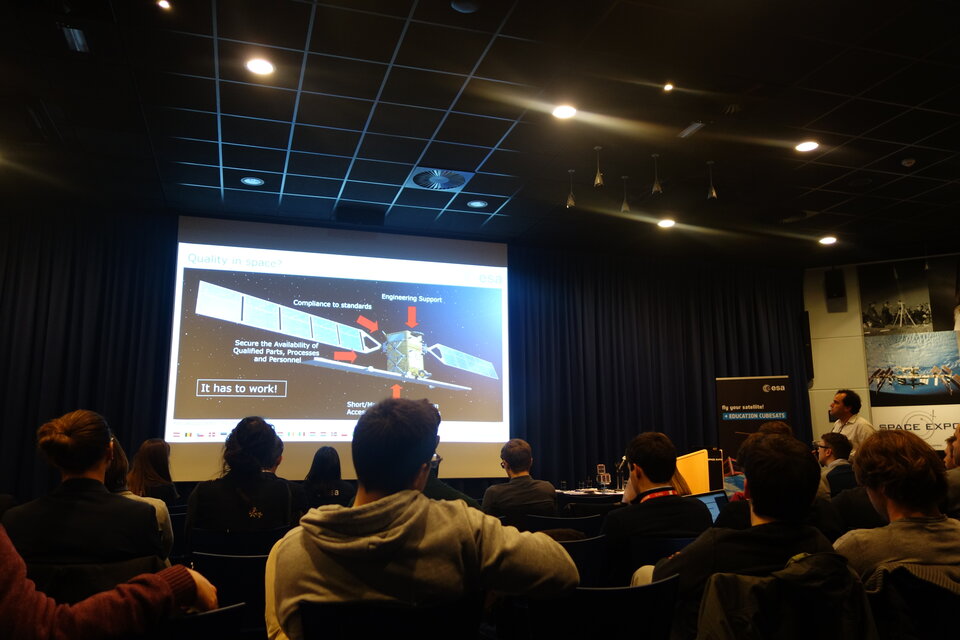Things get critical for CubeSat teams
Four of the six student teams from the Fly Your Satellite! programme have travelled to ESTEC to find out what it takes to get their CubeSat through the Critical Design Review (CDR). It is indeed a critical moment in their project. The review process evaluates the overall quality of the CubeSat design to confirm that it is suitable to meet the technical and programmatic requirements.
The CDR workshop took place between 4 and 8 December with more than 30 students and professors from the four teams in attendance. Throughout the week each team conducted one-on-one meetings with 14 ESA specialists from different areas of expertise. The experts carefully reviewed the team’s design data package and discussed the points for improvement. By following similar methods usually adopted in ESA review processes for large missions, the students became familiar with the standard practice in a professional environment, while further increasing the chance for mission success of their CubeSats.

During the workshop the teams also attended a series of training courses relevant to their projects, including a lecture on product assurance, a full-day hands-on space soldering course, an introduction to ESA’s OPS-SAT CubeSat, and a novel hands-on exercise on Assembly and Integration procedures. Furthermore they presented their projects, highlighting the main design evolutions since the selection workshop, and the technical difficulties that they are tackling. In addition to the primary aim to contribute to the students’ preparation for professional careers, the CubeSat missions target varying objectives:
- 3Cat-4 is designed by students of the Universitat Politecnica de Catalunya (Spain) and intends to investigate the suitability of nanosatellites to perform Earth Observation missions using GNSS-R and L-Band microwave radiometry. 3Cat-4 will also test an Automatic Identification Service (AIS) receiver, meant to locate ships in remote areas, for space applications.
- The LEDSAT team from Sapienza – University of Rome (Italy) is equipping their CubeSat with LEDs, which will demonstrate new techniques for LED-based attitude reconstruction, LEO satellite tracking, and back-up communications with the ground.
- EIRSAT-1, a collaboration between Queen’s University of Belfast (Northern Ireland) and University College Dublin (Ireland), aims to test a novel gamma-ray detector and carry out an experiment into thermal coatings for spacecraft. EIRSAT-1 is working towards becoming the first ever Irish satellite.
- The ISTSat-1 team from the University of Lisbon (Portugal) aims to contribute to the challenge of tracking flying aircraft in remote areas of the Atlantic Ocean. To fulfil the mission, the CubeSat is fitted with an on-board ADS-B receiver, to allow the student team to not only track aircraft, but also to characterise the reception of the signal from space.

Two teams, CELESTA and UoS3 already participated in their CDR workshop in October 2017. In the next few weeks, all six teams involved in the second edition of the Fly Your Satellite! programme will be working hard to make improvements to their CubeSat designs before the CDR can be concluded and the projects can move to the next phase. For the two advanced teams, this means initiating the ambient test campaign, while the other four teams will start building and integrating their satellites.
With confidence that they will keep up the high quality work that they have been doing so far, ESA wishes all teams the best of luck in the steps that follow.



